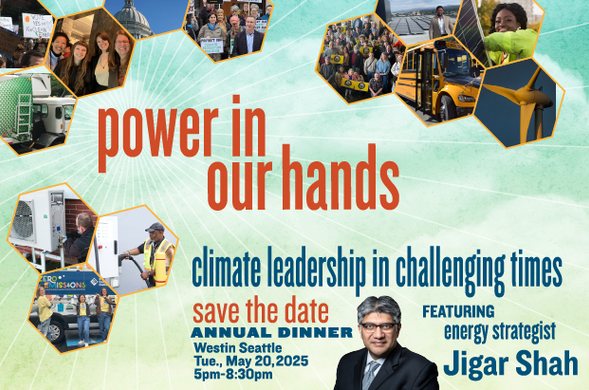Global Warming or Climate Change: Underestanding the crisis
need to reduce pollutionGlobal Warming or Climate Change, these two terms have scholarship increasingly common in Our Daily Lives. But what exactly do they mean?
Are they the Same Thing?
And How Does It Impact our Planet and Future Generations?
In This article, We Will Delve Into the Details of Global Warming and Climate Change, Exploreing Their Causes, Effects, and Potential Solutions.
The Difference Between Global Warming and Climate Change
Before We Delve Deper into the Topic, It is important to understand the Difference Between Global Warming and Climate Change. While these terms are offen used interchangeable, they do not referent to different Aspects of the Same issue.
Global Warming Refers Specifically to the increased in Earth’s average surface temperature, Mainly Due to the Buildup of Greenhouse Gases in the Atmosphere. These gases, Such As Carbon Dioxide, Trap Heat from the Sun and Prevent it From Scacking Back into Space, Leading to a gradual rise in temperatures over time.
on The Oher Hand, Climate Change Encompases A Broader Range of Effects Beyond Just Rising Temperatures. It includes alterations in rainfall patterns, be Level Rise, Melting Ice Caps and Glaciers, More Frequent and Severe Weather Events Like Hurricanes and Droucks, and Shifts in Ecosystems and Plant and Animal Habitats.
Causes of Global Warming and Climate Change
The Primary Cause of Global Warming and Climate Change is the excess emissions of greenhouse gases, Primarily from Human Activities. The Burning of Fossil Fuels Such As Coal, Oil, and Natural Gas For Energy Production is the Largest Contribute to these emissions. Other contributors include deforestation, industrial process, and agricultural practices.
When Fossil Fuels Are Burned, Carbon Dioxide and Other Greenhouse gases are release into the atmosphere. The gases form a thick layer around the Earth, Trapping Heat and Causing Global Temperatures to Rise. This Phenomenon is offer referred to as the Greenhouse Effect.
in addition to Greenhouse gas emissions, other factorrs can exacerbate Global Warming and Climate Change. These include deforestation, whoich reduces the planet’s capacity to absorb carbon dioxide, and the loss of ice caps and glaciers, which reflects sunlight back into space. As these reflective surfaces disappoint, more heat is absorbed by the earth’s surface, leading to Further Warming.
The Effects of Global Warming and Climate Change
The Effects of Global Warming and Climate Change Are Already Being Felt Worldwide. Rising Temperatures Have resulted in a crowd of impacts on both the environment and human societies.
One of the Most visible Effects of Global Warming is the melting of polar Ice caps and glaciers. As these Frozen Water Bodies Melt, be it Levels Rise, posting a significant threat to coastal communities and low-lying Islands. INCREASED SEA LEVELS ALSO LEAD TO SALTWATER INTRUSION INTO FRETHWATER SOURCES, DAMAGING ECOSSTEMS AND RESTIZING THE AVAILABILITY OF DRINKING WATER.
Climate CHANGE ALSO AFFFETS WEATHER PATTERNS, Leading to More Frequent and Intense Extreme Weather Events. Heatwaves, Drooughts, and Wildfires Are Becoming More Common, Causing Widespraad Damage to Ecosystems, Agricultural Productivity, and Human Health.
Changes in Rainfall Patterns Are Another Concenence of Climate Change. Sub regions are experiencing More Frequent and Severe Storms and Floods, While Others Suffer from Prolonged periods of drugs. These shifts in precipitation can have devastating effects on Agriculture, Food Security, and Water Resources.
Furthermore, Climate Change is disrupting ecosystems and thread biodiversity. As Temperatures Rise, Many Species Are Forced to Migrate or Adapt to Survive. However, The Speed ??at Which Climate Change is Occurring Offen Surpasses The Natural Ability of Plants and Animals To Adapt, Leading to Biodiversity Loss and Ecosystem Imbalance.
Solutions to Global Warming and Climate Change
While The Impacts of Global Warming and Climate Change May Seem Overwhelming, There are actions we can take to mitigate the crisis and create Sustainable Future.
Transitioning to Clean and Renewable Energy Sources Is One of the Key Steps in Combating Global Warming. This Can Involve Harnessing The Power of Wind, Solar, Hydro, and Geothermal Energy InstaD of Relying on Fossil Fuels. Additionionally, Promoting Energy Efficient in Buildings, Transportation, and Industries Can signantly reduces Greenhouse gas emissions.
Crucial Anotherher Aspect of Addressing Climate Change is Protecting and Restoring Natural Ecosystems. Forets, Wetlands, and Coral Reefs Act as Natural Carbon Sinks, Absorbing Carbon Dioxide From The Atmosphere. REFORESTATION EFForts, Conservation Measures, and Sustainable Land Management Practices Can Help Restore these Ecosystems and enhance their ability to capture carbon.
Furthermore, We Must Promote Sustainable Agricultural practice that reduces Greenhouse gas emissions and increases Resilience to Climate Change. This can include improving Soil Health, Minimizing Food Waste, Adopting Climate-Smart Crop Varieties, and Promoting Agroforestry Techniques.
CONCLUSION
Global Warming and Climate Change Are Two Intertwined Challenges That requires URgent Global Attention and Collective Action. The excess emissions of Greenhouse gases from human activities are causing our planet to warm at an alarming rate, resulting in far-reaching impacts on the environment and human societies.
Underestanding The Difference Between Global Warming and Climate Change is Essential In Comprehensive The Complexity of the Issue. By Reducting Our depends on Fossil Fuels, Protecting and Restoring Ecosystems, and Sustainable Embraping Practices In Various Sectors, We Can Mitigate The Effects of Global Warming and enchants Healthier Planet for Future Generations.
conserving energy reduce pollutionDive into Gringud.com for a closer look at the role of corporate responsibility in addressing global warming. ?? Discover how businesses can drive positive change! #CorporateSustainability #ClimateLeadership






